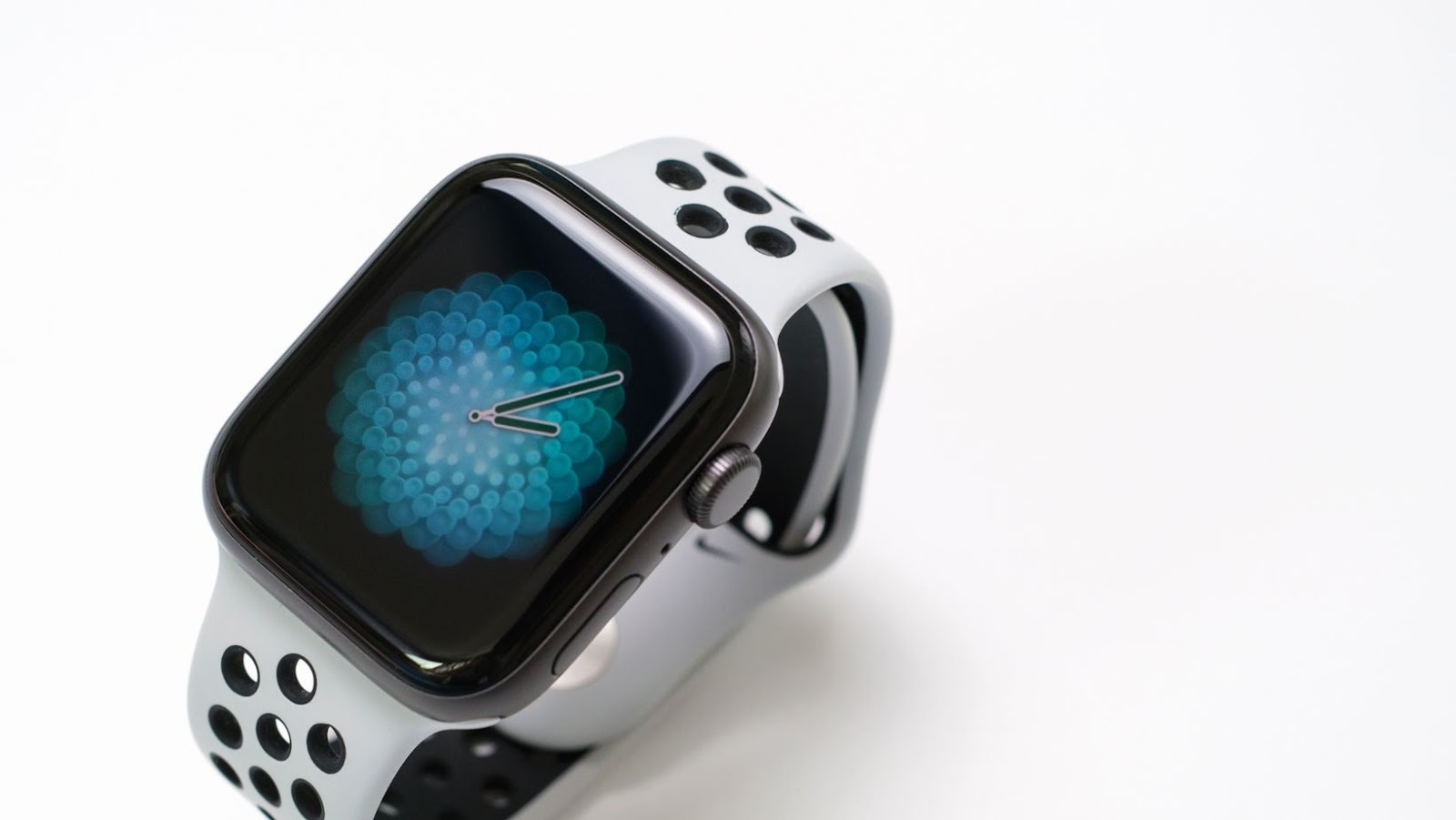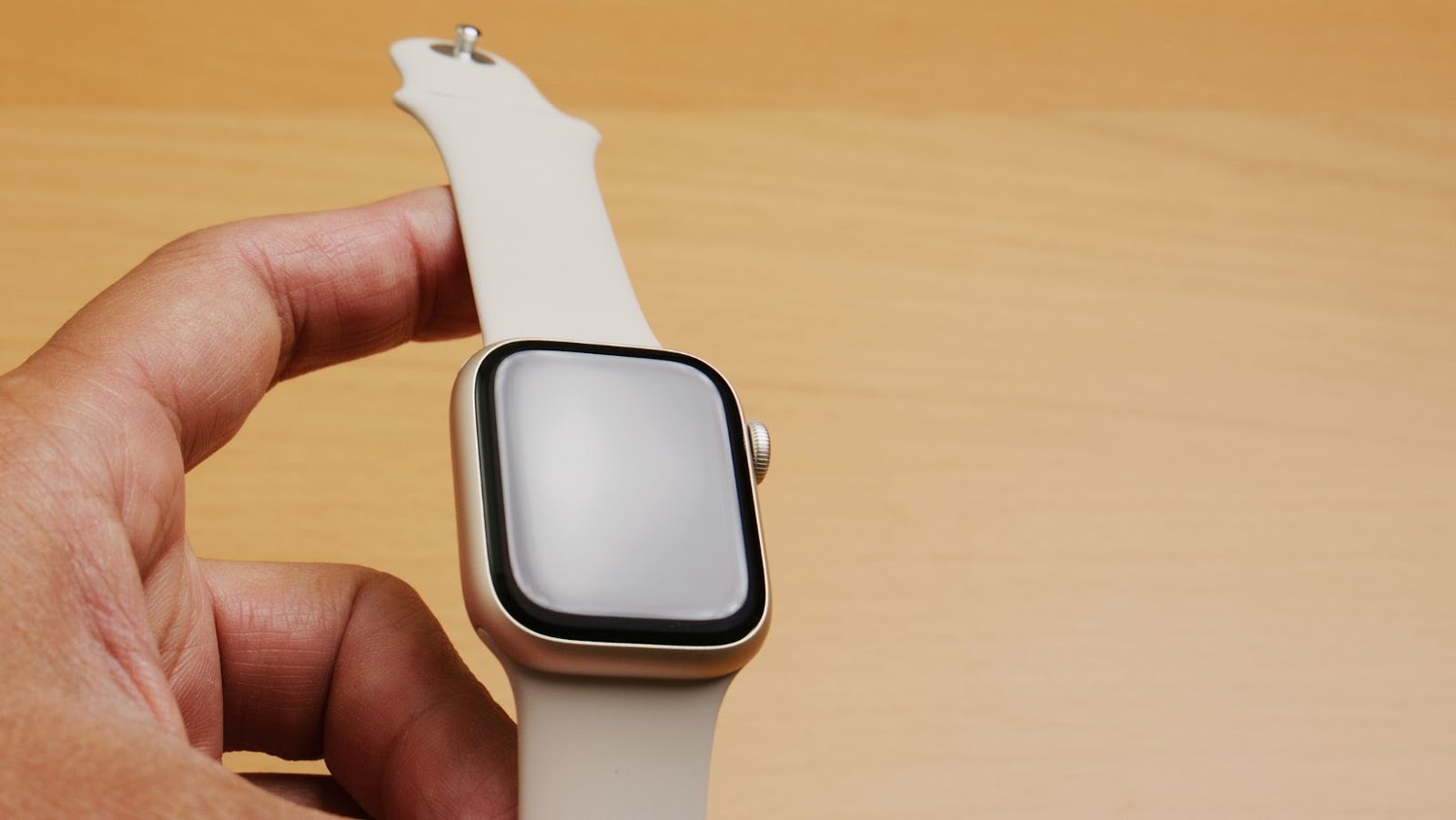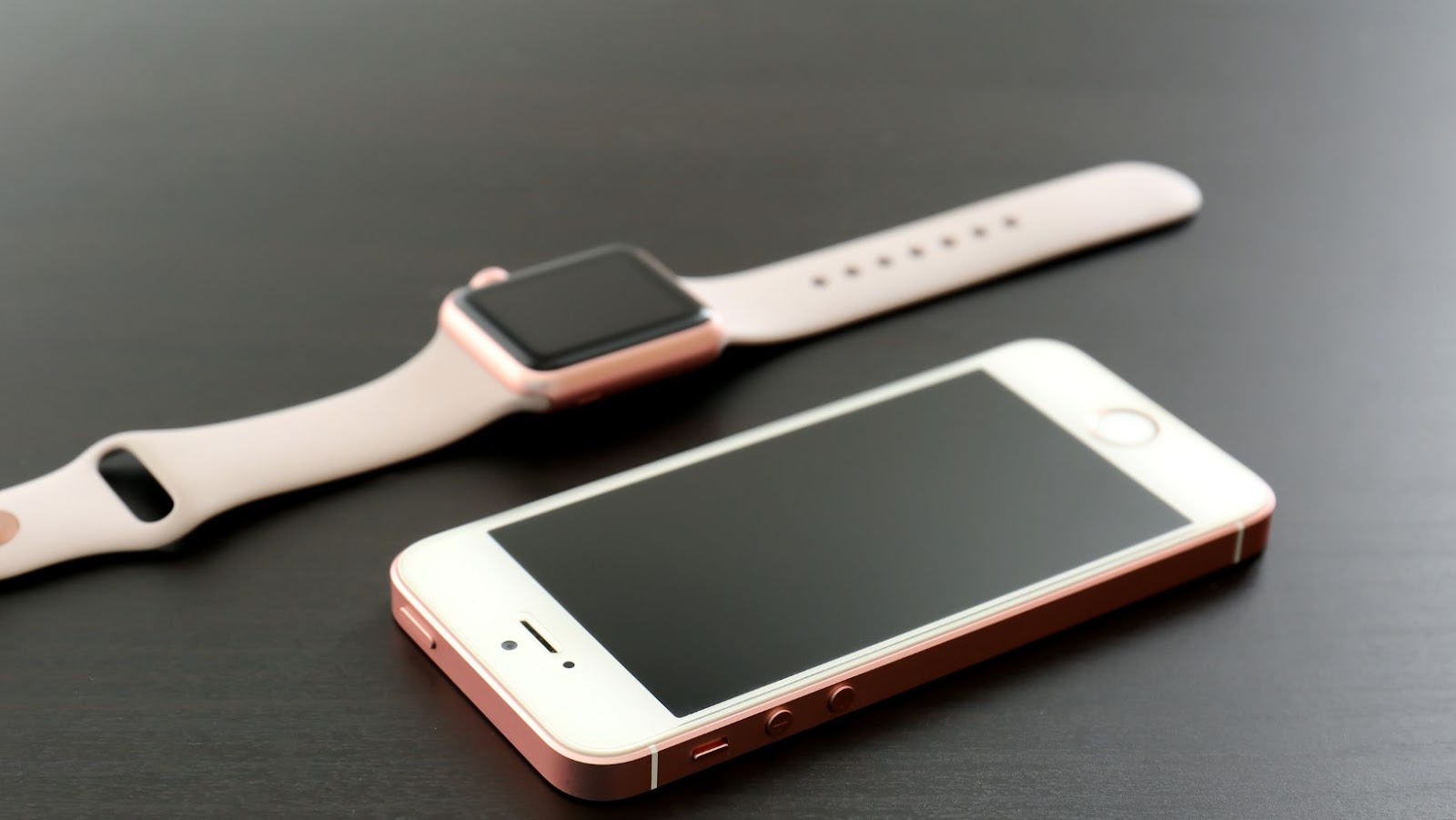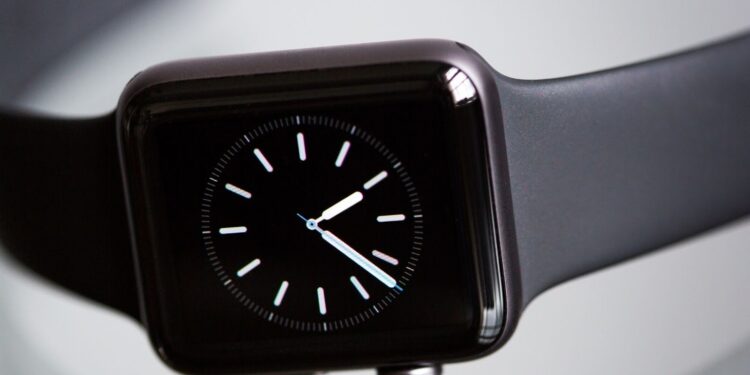There is no direct link between Apple’s removal of the Touch Bar and the Apple Watch. While the Touch Bar was initially billed as a game-changer, it didn’t prove very popular with users.
Apple removed this feature in 2021 for their MacBook Pro models and introduced a physical Esc key, an HDMI port, an SD card reader, and USB ports instead. This move was likely driven by user feedback and a desire to deliver a more traditional keyboard experience.
The Apple Watch, on the other hand, continues to thrive with its touch features that allow users to interact with notifications, messages, apps, and more using simple finger gestures. Its popularity is partly a result of its convenience, user-friendliness, and seamless integration with other Apple devices.
Pro tip: When choosing an Apple product, consider your needs and preferences, and do your research to ensure the product is the right fit for you.
History of Touch Features in Apple Products
Over the years, Apple has implemented various touch features in its products like the MacBook Pro Touch Bar and the Apple Watch. These touch features have allowed users to interact with their devices in unique and intuitive ways. Yet, the Touch Bar was recently retired with the 2021 MacBook Pro, so what led to its removal and what have been the other touch features that Apple has introduced in the past? Let’s take a look.
The Introduction of Touch Features in Laptops
Apple has been a pioneer in introducing touch features in laptops. The Touch Bar, a revolutionary feature introduced in 2016 MacBook models, allowed users to access productivity tools, media controls, and other shortcut features via a touch-sensitive OLED strip. However, with the launch of the latest MacBook Pro models, Apple has done away with the Touch Bar feature, replacing it with a physical row of keys.
Apple may have made this decision based on data showing a lack of adoption by users, but some speculate that the development of Apple Watch may have played a role. Apple Watch and other wearable devices have made touch and gesture control more commonplace, making the Touch Bar feature obsolete. With the possibility of future advancements in touch technology, Apple will likely remain at the forefront of incorporating these features into their products.
The Introduction of the Apple Watch
The introduction of the Apple Watch brought forth a new era of wearable technology and marked another significant achievement for Apple’s touch features.
Since the introduction of the iPod’s click-wheel in 2001, Apple’s touch features have undergone significant evolution, with the iPhone and iPad revolutionizing touch-based interfaces as we know them today.
With its groundbreaking digital crown and force touch capabilities, the Apple Watch built upon these innovations and introduced new ways of interacting with technology via touch.
Apple’s recent decision to remove the touch bar from the most recent MacBook models, however, has sparked debate as to the future of touch features in Apple products.
While some argue that touch technology is beginning to peak, others maintain that it will continue to advance and find new applications in the years to come.
The Introduction of the Touch Bar
In 2016, Apple introduced its latest innovation, the Touch Bar, to its MacBook Pro users. The Touch Bar is a thin, touch-sensitive display strip located at the top of the keyboard that can be customized to display frequently used tools and functions.
The introduction of the Touch Bar was a continuation of Apple’s longstanding commitment to incorporating touch features into their products. Beginning in 2007 with the release of the iPhone, Apple has led the way in popularizing mobile devices that rely heavily on touch-based input. With the introduction of the Apple Watch in 2015, a new frontier of touch technology was explored, with features ranging from simple notifications to heart rate monitoring and ECG readings.
However, despite the initial excitement around the Touch Bar, it has not been as well-received as its predecessor, the function keys. Critics argue that the Touch Bar is neither as functional nor as intuitive as traditional keys, and many users find themselves ignoring it entirely. As a result, Apple has recently decided to discontinue the Touch Bar feature in future MacBook models, focusing instead on other touch-based input devices like the Apple Watch.

Feedback on the Touch Bar
Apple’s Touch Bar made its debut with the launch of the 2016 MacBook Pro. It received mixed reviews, with some users seeking the added convenience and others claiming it was a gimmicky addition. Now, Apple has discontinued the Touch Bar, leaving many users wondering why they got rid of the feature.
In this article, we’ll look at some of the feedback Apple has received on the Touch Bar to better understand their decision to discontinue the feature.
Positive Feedback
Positive feedback on the Touch Bar is common among Apple users who find it easy to use and enjoy its many touch features. While Apple discontinued the Touch Bar on its latest MacBook Pro models, the technology lives on in other devices such as the Apple Watch.
Some Touch Bar features that users appreciate include customizable shortcuts, instant access to frequently used apps, and the ability to reply to messages and emails with a tap. Additionally, the Touch Bar has proven useful for navigating through videos and editing photos.
It’s essential to note that Apple’s decision to remove the Touch Bar from its MacBook Pro models does not reflect its reception by users. Rather, Apple has opted for a more traditional function key row on its keyboards.
As for the future, we can expect to see similar touch features and integrations in upcoming Apple devices such as the rumored AR headset.
Pro tip: To experience the Touch Bar technology, consider purchasing an older model MacBook Pro or exploring other touch-enabled Apple devices.
Negative Feedback
The Touch Bar on MacBook Pro is a touch-enabled control strip that replaces the traditional function keys with dynamic, context-sensitive controls. However, this feature has received negative feedback, with many users claiming that the Touch Bar is not useful enough to justify the loss of the traditional function keys. Apple has now discontinued the Touch Bar in their latest MacBook models and instead provided physical function keys.
One of the reasons behind this decision could be the success of another Apple product – the Apple Watch, which has already established itself as the go-to wearable device for quick and easy access to notifications, health tracking, and other features. The Touch Bar may have been redundant in providing additional touch features that were already available on the Apple Watch.
In conclusion, negative feedback on the Touch Bar has led to its discontinuation in the latest MacBook models. With the success of the Apple Watch, touch features may have become less relevant on laptops and desktops.
Mixed Feedback
The feedback on the Touch Bar has been mixed, with both positive and negative reviews from users. While some appreciate the added convenience and customization options, others find it gimmicky and unnecessary.
Due to the mixed feedback, Apple decided to get rid of the Touch Bar in their latest MacBook Pro models and replaced it with physical function keys.
This move has led to speculation that Apple might be shifting their focus towards touch features on their Apple Watch instead of on laptops. The company’s successful integration of touch and gesture-based interactions on the watch has changed how users perceive portable devices.
Whether or not Apple’s decision to remove the Touch Bar was influenced by this trend remains unclear, but it opens up possibilities for future innovations in touch technology.

Why Did Apple Get Rid of the Touch Bar
Apple has made the decision to discontinue the Touch Bar found in their MacBook Pro laptops. This bold decision has left many tech enthusiasts wondering why Apple made this choice.
In this article, we will take a closer look at Apple’s decision to remove the Touch Bar and the potential implications the move could have on Apple’s other products, specifically the Apple Watch.
Market Demand and Trends
After six years, Apple has officially discontinued the Touch Bar, a narrow touchscreen strip found above the keyboard on some MacBook models, citing a lack of market demand, changing customer interests and feedback, and a shift towards embracing multiple input methods, including touch and voice interfaces.
Apple Watch could be one of the reasons behind Apple’s decision to get rid of the Touch bar. Apple has been pushing voice commands and touchless gestures as part of its future technology, and the Touch Bar may have been seen as a detour from that trajectory. Nevertheless, Apple continues to focus on intuitive interfaces and advanced technologies, cementing its place as a leading innovator in the tech industry.
User Feedback and Complaints
Apple has discontinued the Touch Bar, which raised several questions among users who loved the feature. This decision has sparked user feedback and complaints regarding the Touch Bar’s removal.
Apple has claimed that users prefer the traditional function keys over the Touch Bar. However, many users have criticized the decision, arguing that the Touch Bar provided a more ergonomic way to use the keyboard and was particularly useful for creative work.
Despite the backlash, Apple’s decision is irreversible and signals a shift in the company’s approach to user interface design. As Apple moves forward, it will be interesting to see what other changes they make to their products and how users respond to them.
Pro tip: When using Apple products, it is important to stay updated on the latest changes and features. Keep an eye out for new product releases and software updates to stay ahead of the curve.
Technology Advancements and Limitations
After several years of mixed reception, Apple has decided to discontinue the touch bar feature on its MacBook Pro models. The touch bar, which replaced the traditional function keys and added a touch-sensitive strip above the keyboard, faced limitations in terms of functionality and failed to live up to its potential.
Some users found the touch bar distracting, especially when typing. Moreover, developers did not fully integrate this technology into their applications, resulting in a lack of widespread adoption among users.
Apple, therefore, decided to focus more on technologies such as its Apple Watch, which have been successful and widely adopted due to their functionality and integration into different platforms.
As technology continues to evolve and consumers demand more seamless and intuitive interfaces, it is crucial for companies to balance innovation with practicality to achieve widespread adoption.
Alternative Touch Features for Apple Products
The Touch Bar was one of Apple’s most innovative features, and its removal caused a stir amongst Apple fans. However, Apple has replaced it with alternative touch features that can still make a difference to users’ experiences.
This article will explore the alternative touch features that Apple has implemented, and why they have had to do this.
Integration of Apple Watch With Mac
The integration of Apple Watch with Mac offers alternative touch features to enhance the overall user experience. With the latest macOS Big Sur update, Apple added a feature called ‘Unlock with Apple Watch.’ This feature enables the user to unlock their Mac using their Apple Watch, making the login process faster and more convenient. Additionally, Apple Watch can be used as a trackpad, offering new and innovative ways to interact with your Mac. The integration of Apple Watch with Mac is an example of Apple’s commitment to providing a seamless user experience across its products.
However, contrary to popular belief, Apple did not get rid of the Touch Bar on its MacBook Pro models altogether. Recently, Apple introduced a lower-end MacBook Pro model without the Touch Bar, while still offering the Touch Bar option for its high-end models. While the Touch Bar has not been a huge success, its integration with other Apple devices, such as the Apple Watch, could potentially make it a more popular feature in the future.

Touch ID and Face ID
Touch ID and Face ID are alternative touch features for Apple products, designed to enhance the user experience while keeping the device secure.
Touch ID is a fingerprint recognition feature used on iPhones, iPads, and MacBook Air and Pro models. It allows users to unlock their devices and make purchases securely with a simple touch of the finger.
Face ID, on the other hand, uses facial recognition technology to unlock iPhones and iPads. It scans the user’s face and unlocks the device in a few seconds.
While Touch ID and Face ID have been successful features for Apple, the tech giant has made the controversial decision to get rid of the Touch Bar on their MacBook Pro models. The reason behind this move is still unclear and has sparked a debate among Apple users.
Overall, Apple has always been at the forefront of technological innovation, and Touch ID and Face ID are prime examples of this. These touch features offer enhanced security and convenience, making it easier for users to access their devices with just a touch or a glance.
| Pro tip: | To ensure the smooth functioning of Touch ID and Face ID, always keep your devices’ software updated to the latest version. |
Voice Control and Dictation
Voice Control and Dictation are alternative touch features for Apple products, providing a hands-free way to control your device and perform tasks like texting, searching the web, and even using touch gestures.
Voice control allows you to navigate your device’s interface through voice commands, while dictation lets you speak to enter text in place of typing.
If you are an Apple Watch user, you can use voice control to make calls, send texts, set reminders, and much more with just your voice.
With the recent decision to remove the Touch Bar from some of its products, Apple is adapting to the customers’ feedback and is finding new ways for a better user experience to interact with technology through Voice Control and Dictation.
Pro Tip: It is always best to use Dictation when in a quiet place to make sure that your device can pick up your commands properly.
Conclusion: The Future of Touch Features in Apple Products
After years of incorporating touch features into their products, Apple’s recent removal of the touch bar in the newer MacBook Pro models raises questions about the future of touch features in Apple products.
While Apple has taken a step back from touch features in their laptops, they have continued to innovate with touch technology in their other products, particularly the Apple Watch. The Apple Watch offers a touch screen display that allows users to control and access various features with the swipe of a finger.
One reason for Apple’s shift away from the touch bar in laptops may be due to user feedback and the need for more functional keys. However, it is important to note that Apple has not abandoned touch features altogether and is likely to continue exploring touch technology in other areas, such as wearables like the Apple Watch.
Pro tip: Keep an eye out for Apple’s advancements in touch technology, particularly in their wearables like the Apple Watch.














